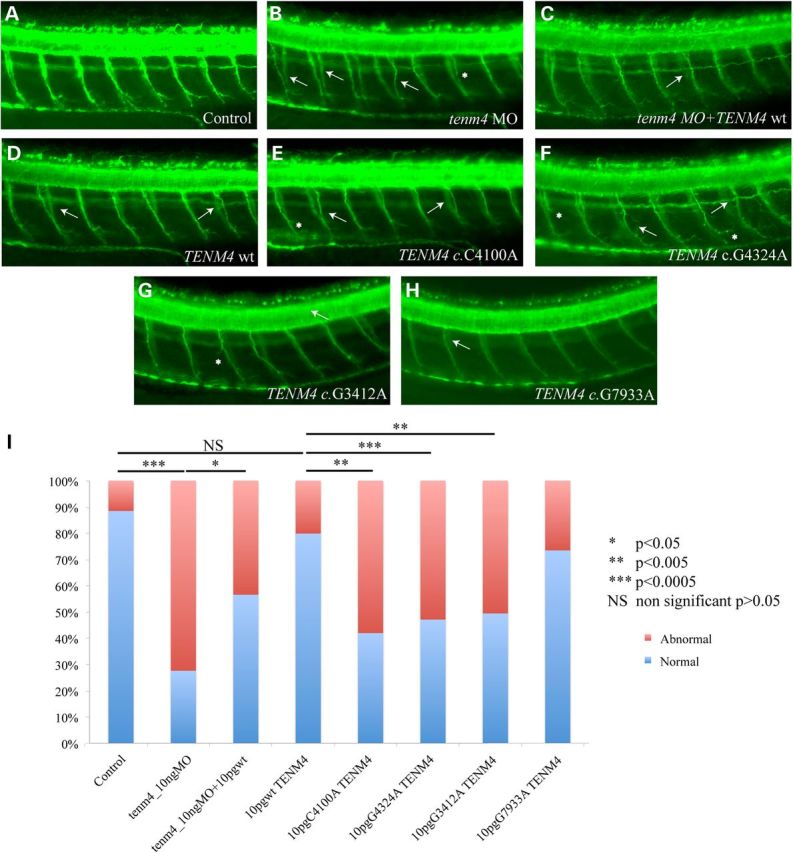Figure 3.

Suppression of tenm4 in zebrafish causes defects in motor axon pathfinding, outgrowth and branching. (A–H) Lateral views of zebrafish embryos at 2dpf stained with acetylated tubulin. In wild-type (wt) embryos (A), motor axons have completed migration from the periphery, along the common path, and extended to the myotome. In tenm4 morphants (B), secondary axons either fail to migrate along their path (white arrows), exit the periphery but fail to extend, or branch abnormally (asterisks). Suppression of tenm4 can be partially rescued by co-injection with human wt RNA (C). Overexpression of human Tenm4 wt causes mild pathfinding errors (D), suggesting dose sensitivity for TENM4, Human Tenm4 mutants C4100A (c.4100C>A), G4324A (c.4324 G>A) and G3412A (c.3412G>A), when overexpressed are significantly more severe than TENM4 wt and have similar effects to suppression of tenm4 by MO knockdown (E–G). Overexpression of control allele G7933A (c.7933G>A) causes mild pathfinding errors like overexpression of wt allele (H). (I) Percentage of normal versus abnormal embryos under the conditions being evaluated above.
